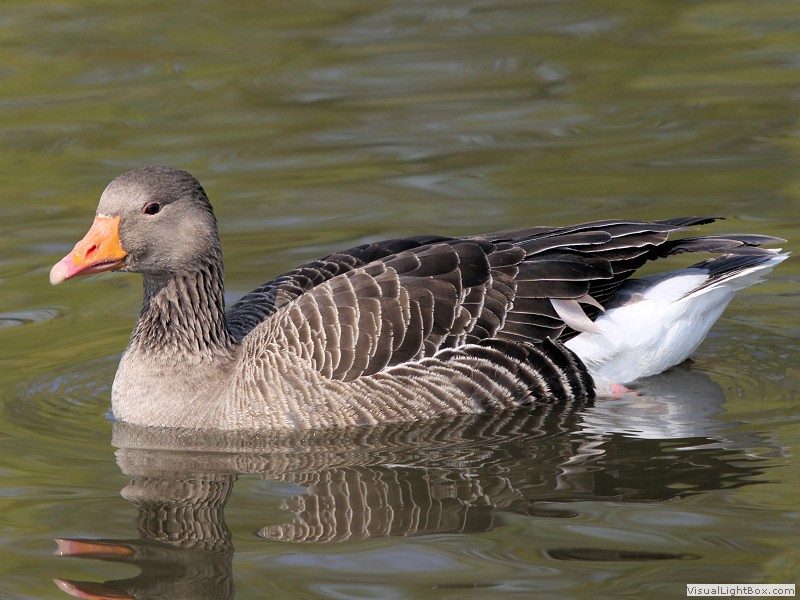Greylag goose: Red Data Book of Armenia

Ducks, geese and swans — Anatidae
Status. A rare species of sharply decreasing population in Armenia. Listed in the IUCN Red List of Threatened Species (ver. 3.1) as Least Concern. According to IUCN criteria categorized as Vulnerable VU D1.
Distribution. Distributed in Eurasia from the Atlantic Ocean to the Pacific Ocean, and in Northwestern Africa.
Distribution in Armenia. In the 1930–1950s, it was widespread on all water bodies of Armenia. Currently, it occurs sporadically on Sevan and Arpi and more often on the fish ponds and in wetlands of the Ararat Valley, also wintering there.
Habitats. The nesting grounds on the Lake Sevan are completely destroyed because of water subsidence. Transformation of the Lake Arpi into a reservoir has led to the disappearance of riparian vegetation and the cessation of goose nesting. The establishment of fish farms in the Ararat Valley has recovered the food base and nesting grounds, so geese occur here all year round.
Biological traits. The nest is made of reed stems, twigs and residues of riparian plants, fledged with down and placed on the islets of fish ponds with lush reedbeds. Eggs are light yellow, 4–6/clutch, size 80–95 mm. The brooding period is 25–30 days.
Population size and its trends. At present, 30–50 pairs of greylag geese can be watched on the fish ponds of the Ararat Valley. The number of wintering birds varies from 50 to 150.
Major threats. Reed burning and, during the breeding season, disturbance and poaching.
Conservation measures. Listed in Appendix II of the Berne Convention. Protected in Sevan National Park and Lake Arpi National Park. Personnel of the Armash fish ponds are involved in awareness–raising activities. It is essential to restore the Lake Gilli, raise the level of the Lake Lichk, declare the Armash fish ponds an Important Bird Area, estimate population size throughout a year and to strengthen anti–poaching activities.
Suggestions
 The Ministry of Environment sent a letter international partners to draw their attention to the real danger of environmental disasters as a result of Azerbaijan's large-scale aggression towards the territory of Armenia
The Ministry of Environment sent a letter international partners to draw their attention to the real danger of environmental disasters as a result of Azerbaijan's large-scale aggression towards the territory of Armenia
 Vicia pisiformis: Red Data Book of Armenia
Vicia pisiformis: Red Data Book of Armenia
 Vavilovia formosa: Red Data Book of Armenia
Vavilovia formosa: Red Data Book of Armenia
 Trigonella capitata: Red Data Book of Armenia
Trigonella capitata: Red Data Book of Armenia
 Trigonella astroides: Red Data Book of Armenia
Trigonella astroides: Red Data Book of Armenia












